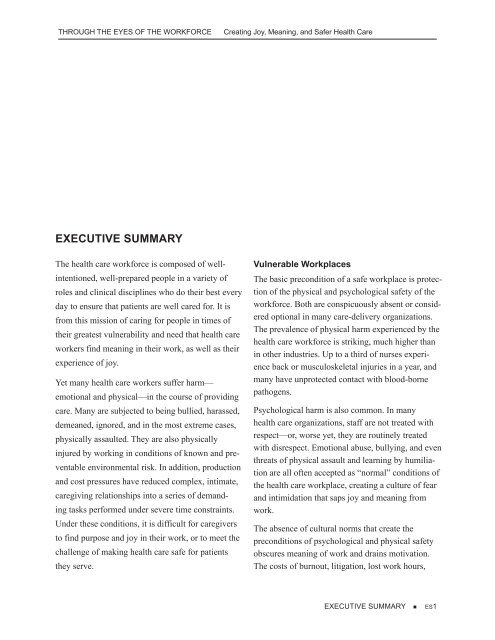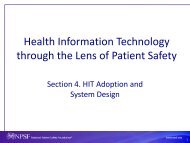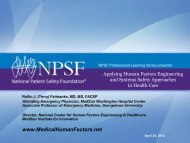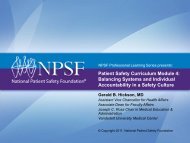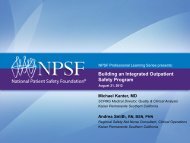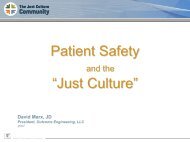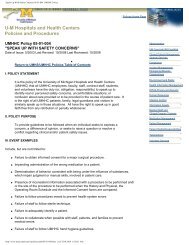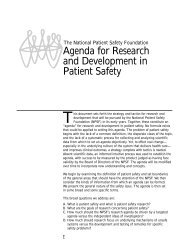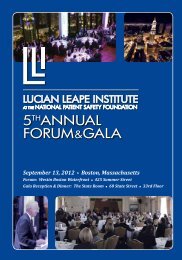Through The eyes of The Workforce - National Patient Safety ...
Through The eyes of The Workforce - National Patient Safety ...
Through The eyes of The Workforce - National Patient Safety ...
You also want an ePaper? Increase the reach of your titles
YUMPU automatically turns print PDFs into web optimized ePapers that Google loves.
THROUGH THE EYES OF THE WORKFORCECreating Joy, Meaning, and Safer Health CareEXECUTIVE SUMMARY<strong>The</strong> health care workforce is composed <strong>of</strong> wellintentioned,well-prepared people in a variety <strong>of</strong>roles and clinical disciplines who do their best everyday to ensure that patients are well cared for. It isfrom this mission <strong>of</strong> caring for people in times <strong>of</strong>their greatest vulnerability and need that health careworkers find meaning in their work, as well as theirexperience <strong>of</strong> joy.Yet many health care workers suffer harm—emotional and physical—in the course <strong>of</strong> providingcare. Many are subjected to being bullied, harassed,demeaned, ignored, and in the most extreme cases,physically assaulted. <strong>The</strong>y are also physicallyinjured by working in conditions <strong>of</strong> known and preventableenvironmental risk. In addition, productionand cost pressures have reduced complex, intimate,caregiving relationships into a series <strong>of</strong> demandingtasks performed under severe time constraints.Under these conditions, it is difficult for caregiversto find purpose and joy in their work, or to meet thechallenge <strong>of</strong> making health care safe for patientsthey serve.Vulnerable Workplaces<strong>The</strong> basic precondition <strong>of</strong> a safe workplace is protection<strong>of</strong> the physical and psychological safety <strong>of</strong> theworkforce. Both are conspicuously absent or consideredoptional in many care-delivery organizations.<strong>The</strong> prevalence <strong>of</strong> physical harm experienced by thehealth care workforce is striking, much higher thanin other industries. Up to a third <strong>of</strong> nurses experienceback or musculoskeletal injuries in a year, andmany have unprotected contact with blood-bornepathogens.Psychological harm is also common. In manyhealth care organizations, staff are not treated withrespect—or, worse yet, they are routinely treatedwith disrespect. Emotional abuse, bullying, and eventhreats <strong>of</strong> physical assault and learning by humiliationare all <strong>of</strong>ten accepted as “normal” conditions <strong>of</strong>the health care workplace, creating a culture <strong>of</strong> fearand intimidation that saps joy and meaning fromwork.<strong>The</strong> absence <strong>of</strong> cultural norms that create thepreconditions <strong>of</strong> psychological and physical safetyobscures meaning <strong>of</strong> work and drains motivation.<strong>The</strong> costs <strong>of</strong> burnout, litigation, lost work hours,EXECUTIVE SUMMARY • ES1


